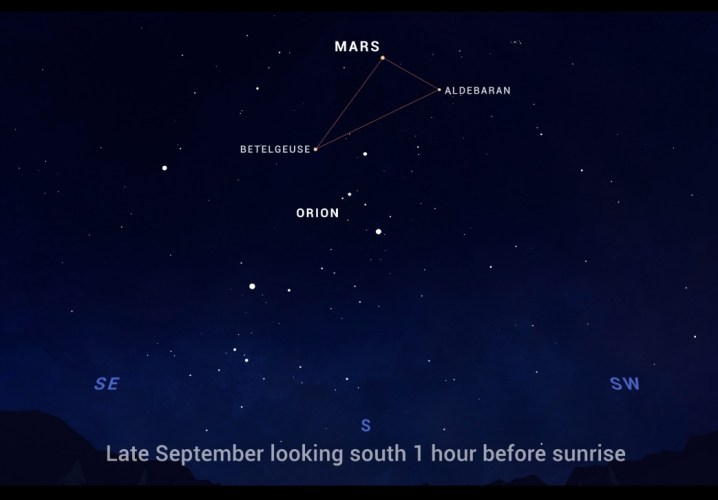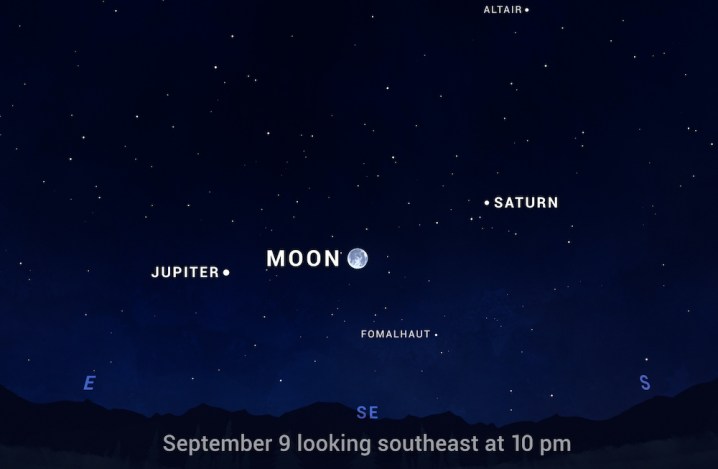
NASA is again with its month-to-month roundup of what to look out for within the sky over the approaching weeks.
Mars, Jupiter, and Saturn all characteristic, although with the long-awaited Artemis I mission set to get underway this weekend, we’re additionally giving the moon a particular point out.
However let’s begin with Mars. Gaze skyward earlier than dawn and also you’ll spot the purple planet excessive within the south, the planet distinguishable by its salmon-pink colour. And take observe, you don’t want binoculars to view Mars, only a clear sky.
“Over the course of the month, Mars works its method eastward from Aldebaran towards reddish Betelgeuse, making a form of ‘purple triangle’ within the morning sky,” NASA says on its web site, including that it’ll then seem to “hit the brakes and halt its eastward movement, to hang around in that triangle for the subsequent month or so.”

This month additionally presents a wonderful alternative to look at Jupiter, the biggest planet in our photo voltaic system. The celestial physique hit the headlines final month when the James Webb House Telescope captured an astonishing picture displaying the planet as we’ve by no means seen it earlier than.
Earlier than dawn, on the morning of September 11, you’ll see Jupiter simply a few finger-widths from the moon — at the very least, that’s the way it’ll look from Earth.
You possibly can simply view Jupiter with the bare eye, however if in case you have a pair of binoculars or telescope helpful, you’ll additionally be capable of get a glimpse of Jupiter’s 4 giant moons, which can seem as little starlike factors of sunshine very near the planet.
NASA notes that its Jupiter-orbiting Juno spacecraft is about to make a fly-by of certainly one of these icy moons, Europa, on September 29, coming inside simply 200 miles of its floor whereas amassing a trove of science information to ship again to Earth.
Upon getting Jupiter in your sights, recognizing Saturn needs to be a breeze.
“On the night time of the ninth, Jupiter and Saturn escort the moon throughout the sky,” NASA says. “You’ll discover the trio rising within the southeast within the first couple of hours after darkish, and gliding westward collectively over the course of the night time. By the tip of the month, you’ll discover the pair of planets rising even earlier, showing within the east quickly after it will get darkish, with vivid Jupiter hanging low within the sky.

Lastly, we advocate taking a second to gaze on the moon to ponder how our nearest neighbor is as soon as once more on the middle of our quest to launch astronaut missions past low-Earth orbit. The duty begins on Saturday with the launch of NASA’s Artemis I mission utilizing probably the most highly effective rocket it’s ever constructed. The mission shall be uncrewed, however it is going to pave the way in which for astronaut voyages, together with a lunar touchdown earlier than the tip of this decade. And from there, we might go on to Mars within the 2030s.
When you need assistance recognizing any of the planets or stars talked about above, then merely seize certainly one of these super-useful astronomy apps, which embody augmented-reality options that can assist you simply determine all the pieces you see within the night time sky.
Editors’ Suggestions